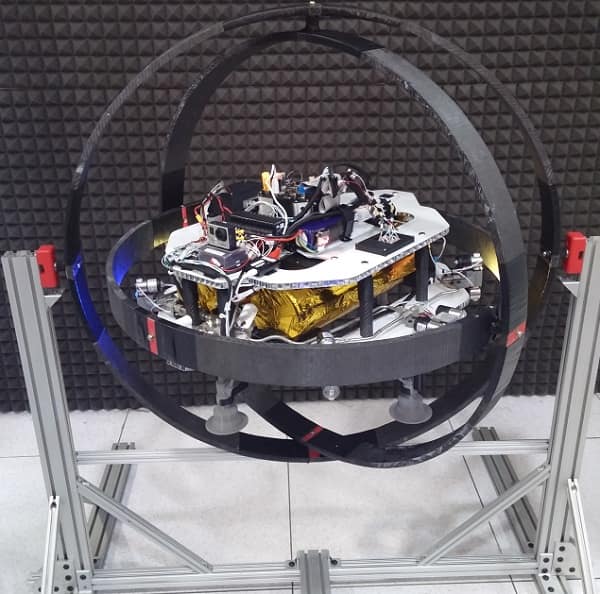ERAU, Honeybee Robotics Receive $750,000 Award From NASA to Develop Asteroid Mining Robots

NASA has announced the continuation of a two-phase $750,000 research award to Embry-Riddle Aeronautical University and project partner Honeybee Robotics to develop a small integrated autonomous robotic spacecraft system to support the exploration and mining of asteroids and other planetary bodies and moons.
Dr. Hever Moncayo and Dr. Richard Prazenica, both Assistant Professors of Aerospace Engineering in the College of Engineering are leading the effort at the Daytona Beach Campus. Also collaborating on this project is Dr. Sergey Drakunov, Professor of Engineering Physics in the Physical Sciences Department and Associate Dean of the College of Arts and Sciences. Dr. Kris Zacny is the team lead for Honeybee Robotics.
The Embry-Riddle team includes Aerospace Engineering master’s degree students Diego Garcia, Chirag Jain, Andres Chavez, Wai Leuk Law, Aerospace Engineering Ph.D. student Andres Perez and Engineering Physics Ph.D. student Samuel Kitchen-McKinley. The researchers are focusing on an innovative concept based on autonomous small free-flyer prospector spacecraft that can leave from, return and recharge from a mothership on the planet’s or asteroid’s surface.
The spacecraft design will use unique technologies such as MicroDrills and Pneumatic Samplers previously developed under NASA Small Business Innovation Research project awards by Honeybee Robotics. In particular, the research effort will focus on flight control and guidance under extreme environments, vision-aided navigation approaches, and sampling systems design, testing and evaluation. The proposed flying scouts spacecraft system was developed, simulated and evaluated during Phase I of the project, and is now being experimentally validated and demonstrated during Phase II through flight-testing on an autonomous research platform.
“This is an important project in our efforts to establish a long term partnership with NASA Centers,” said Dr. Moncayo. “Aerospace engineering students working together with faculty are pushing the boundaries of applied research towards innovative and low cost technologies for the exploration of extreme environments, not only for space missions, but also for terrestrial applications.”
For more information on developing deep space flying prospecting robots, see Extreme Access Flyer to Take Planetary Exploration Airborne on the NASA website.

 James Roddey
James Roddey